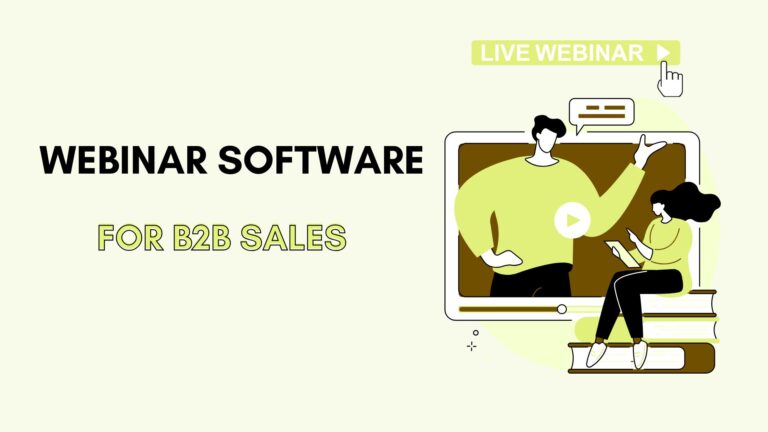Statista reported that the Artificial Intelligence market is expected to reach a size of $244.22 billion by 2025. 78% of respondents report that their organizations are using AI in at least one business function, according to McKinsey & Company’s latest survey.
The market for AI-powered tools is stronger than ever. 95% of organizations are projected to adopt AI-powered SaaS applications by 2025.
AI-powered competitive analysis tools are fast at processing market data and surfacing trends. For most businesses, the right tool will give you more than enough firepower to analyze competitors and identify opportunities. The best options can become an essential part of your competitive strategy.
Top AI-powered tools for competitive analysis for 2025:
- Semrush
- Ahrefs
- Similarweb
- AlphaSense
- Brandwatch
| Tool | Best For | Main Features | Price |
| Semrush | SEO, Content Marketing | AI-driven keyword & content gap analysis, backlink tracking, PPC insights, site audits | From $117.33/month (billed annually) |
| Ahrefs | SEO | AI-powered keyword gap & SERP impact prediction, backlink analysis, and site audits | From $108 /month (billed annually) |
| Similarweb | Web Analytics | AI-based traffic forecasting, audience segmentation, and competitor channel analysis | From $129 /month |
| AlphaSense | Market Research | NLP-powered document search, real-time summarization, sentiment analysis | Custom |
| Brandwatch | Social Listening | AI-driven social listening, sentiment analysis, influencer tracking, share-of-voice dashboards | Custom |
The core benefit of AI-powered competitive analysis is the ability to gain a significant competitive advantage through speed and precision. These tools can process and synthesize massive datasets in minutes, allowing businesses to make faster, more informed decisions.
Semrush – Best for SEO & Content Marketing
Semrush has come a long way, from its early days as a favorite SEO keyword research platform to its current incarnation as an all-in-one toolkit.
These latest updates, given to implementations involving AI and much data intelligence, bring really actionable insights on your marketing, advertising, and content strategies.

Competitive Research: Semrush offers a comprehensive view. The platform enables you to zoom out for a “helicopter view” of market dynamics (top players, traffic share, and growth patterns) and then drill down to the micro-level, analyzing rivals’ promotional strategies, ad placements, and top-performing content.
AI Brand Visibility Analysis: Semrush’s AI toolkit allows you to see how LLMs like ChatGPT present your brand in conversations. It tracks brand mentions, sentiment, and context. It also identifies which benefits, use cases, or features resonate most with users, and provides actionable recommendations.
Traffic Analytics: The traffic analytics tool provides an analysis of the performance of any domain with daily and weekly traffic trends, audience demographics, and a traffic journey map. You can test how you measure up against your competitors and discover potential partner or backlink opportunities from high-traffic referrers.
Organic Research: You can dissect any one of your best-performing pages and then do the same for your competitors. Using advanced filtering through intent, CPC, traffic, and keyword position, you can prioritize only the terms and pages that will deliver measurable ROI.
Advertising Research: The feature lets you analyze your own and competitors’ PPC spending patterns, keyword targeting, and ad copy.
Social Media Tracker: Semrush’s social media tracker consolidates publishing, scheduling, competitive benchmarking, and content analytics into a single workflow. You can see which of your own and competitor posts go viral, which hashtags drive engagement, and how audiences grow over time.
Pros of Semrush
- Comprehensive all-in-one toolkit
- Detailed and actionable data
- AI-powered insights
- User-friendly data visualization
- Powerful features for content strategy
Cons of Semrush
- High cost and complex pricing structure
- Steep learning curve
Ahrefs – Best for SEO Intelligence
Ahrefs has expanded its already massive keyword and backlink databases, but also because it has integrated AI directly into its analytics engine.

Site Explorer: A comprehensive competitive intelligence hub dissects any website’s organic traffic, backlink profile, paid traffic strategy, site structure, and so on. The organic traffic analysis component reveals which keywords competitors rank for, how much traffic those keywords drive, and more.
This is powered by Ahrefs’ tracking of hundreds of millions of keywords, giving it one of the most powerful datasets in the industry. In addition, historical data and comparison tools allow users to pinpoint when and why traffic shifts occurred.
Backlink Profile: This feature is equally powerful. Ahrefs operates the fastest backlink crawler and maintains a powerful link database. As a marketer, you can explore every link pointing to a target site.
Paid Traffic Performance: For paid search intelligence, paid traffic performance analysis shows what keywords competitors are bidding on, how long they’ve been running those campaigns, and where they’re directing paid traffic. You can reverse-engineer effective PPC campaigns.
Brand Radar: Ahrefs has added Brand Radar, which tracks how brands appear in AI search results, chatbots, and answer engines. It benchmarks AI visibility against competitors, monitors sentiment, and helps brands identify content or positioning gaps in AI-generated responses.
AI Content Helper: Ahrefs also helps the workflows of content marketing by providing both AI Content Helper and AI Content Grade, which guide content creation to match search intent, fill content gaps, and meet Google’s standards.
Added with Keywords Explorer, you can generate and cluster thousands of keyword ideas, prioritize them with proprietary SEO metrics, and then produce targeted content.
Pros of Ahrefs
- Massive backlink data
- Deep content and keyword intelligence
- AI-driven market and trend forecasting
- Rich site audit and technical SEO
Cons of Ahrefs
- Premium tool with high cost
- Steep learning curve
Expert opinion
Becoming number one is easier than remaining number one.

Bill Bradley
Similarweb – Best for Web Analytics
With Similarweb’s latest AI-driven competitive analysis suite, you can see how the platform connects data points across channels, geographies, and industries to create actionable strategies. It’s a decision-making engine built on real-time market data, AI trend detection, and predictive insights.

Competitive Visibility: Similarweb provides end-to-end competitive visibility, tracking rivals’ SEO, PPC, affiliate, and advertising strategies all in one place. The traffic & engagement module measures market share, reach, audience distribution, and engagement quality.
Paired with marketing channels analysis, you get a view of where a rival’s traffic originates (organic search, paid ads, referrals, social, or emerging AI chatbots).
Competitive Tracking: Competitive tracking is arguably its greatest benefit. It allows tracking up to 25 competing websites at once. The organic & paid competitors feature reveals keyword traffic shares by location, search intent, and difficulty, while also exposing the prompts and queries driving visits from AI assistants.
AI Dream Team: Similarweb’s AI dream team further enhances this intelligence with specialized AI modules. One detects consumer trends before they hit the mainstream, connecting spikes in search volume to real-world events. Another turns keyword wishlists into fully realized SEO strategies in clicks.
Pros of Similarweb
- Outstanding market and traffic intelligence
- Extensive traffic insights; audience and industry benchmarking
- Insights into the AI-driven search
- Strong data visualization and ease of use
- Broad scope of intelligence
Cons of Similarweb
- Many of the most powerful features and deeper insights are locked behind an expensive enterprise-level plan
- Less focus on providing a tactical roadmap for SEO execution
AlphaSense – Best for Market Research
AlphaSense is an AI-powered market intelligence and search platform, primarily serving the financial and corporate sectors. Its generative AI capabilities and vast content library have made it a powerful tool for competitive analysis.

AI-powered Research Acceleration: At its core, AlphaSense merges proprietary content aggregation with AI-powered research acceleration. The platform pulls from premium sources covering public companies and private companies, including broker research, expert call transcripts, company filings, market reports, and internal firm documents.
Much of this information is either behind expensive paywalls or scattered across siloed databases, but AlphaSense centralizes it into a single, enterprise-grade hub.
AI Search Engine: The AI smart search engine is trained to understand the language of markets and industries, enabling users to run highly nuanced queries and get back context-aware, citation-backed results. Advanced filtering allows precision targeting of results by sector, geography, document type, or KPI focus.
Pros of AlphaSense
- Vast and specialized content universe
- Powerful generative AI features
- Deep financial and strategic insights
- Integration with internal content
- Enterprise-grade security
Cons of AlphaSense
- Enterprise-grade pricing
- Steep learning curve
- Limited visualization tools
Brandwatch – Best for Social Listening
Brandwatch is one of the most powerful AI-powered social analytics tools available today. It tracks consumer conversations and uses proprietary AI and integrations with models like ChatGPT to transform raw social data into actionable insights.

Consumer Intelligence: Brandwatch provides consumer intelligence at scale, pulling from the world’s largest archive of online opinions and discussions. Combining historical archives with real-time monitoring of data sources allows businesses to detect trends, threats, and opportunities.
What makes this powerful is the integration of Iris AI, Brandwatch’s proprietary system that distills spikes in sentiment, emerging themes, and conversation drivers into concise, digestible insights.
Social Media Management: From campaign scheduling to team approvals and unified inbox management, Brandwatch simplifies the operational side of content publishing. The integration of the Iris writing assistant helps craft posts, ad copy, or customer replies.
Iris Content Insights: Brandwatch directly addresses competitive benchmarking. Users can run automated AI summaries of competitor posts.
Iris Post Analysis: Finally, Brandwatch closes the loop with Iris post analysis, which measures vanity metrics like impressions or clicks and analyzes how audiences perceive and react to your content.
Pros of Brandwatch
- Premium social listening and data coverage
- Advanced AI for sentiment and topic analysis
- Powerful benchmark tool and full social management suite
- Powerful data visualization
- Image and visual recognition
Cons of Brandwatch
- High enterprise-level pricing
- Steep Learning Curve
- Potential for data overload
Conclusion
Still, it’s impressive that these AI-driven platforms enhance competitive intelligence. Considering how quickly new entrants have pushed boundaries this year, it’s likely that this wave of innovation is pushing established players to level up their offerings. Regardless, these tools mark a big step forward in making high-quality market analysis faster, smarter.
Frequently Asked Questions





